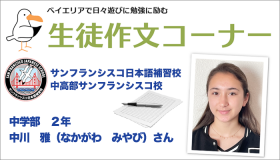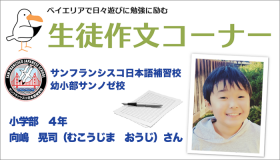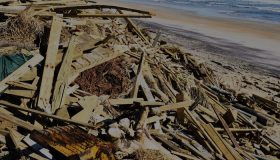
photo : Luis Valls (left) and Nick Ishimaru (right) in Power Plays- A Religious Dispute – Photo by Jon Bauer
Nick Ishimaru ニック・イシマル
舞台クリエイター、監督、パフォーマー。2005 年Colorado State UniversitynityでPerforming Artsの学士号、2009 年San Francisco State University にてDrama の修士号を取得。学生時代から歌舞伎版『マクベス』をはじめ、西洋の古典を日本の伝統芸能の手法で表現。University of Hawaiiでは歌舞伎と京劇(中国の古典演劇)を学ぶ。Theatre of Yugen では7年以上能と狂言のトレーニングを積み、2016年から2019年までディレクターを務める。
日本の伝統芸能に興味を持ったキッカケは何ですか
How did you get interested in expressing classic western literatures in Noh or Kabuki?
私は日系ハーフの4世で、日本とアメリカ文化の混ざった環境で育ちました。しかし日本語が話せるようになる環境ではなく、コロラド州立大学のメジャーは舞台でしたが、マイナーで日本語を選びました。ただ、少しお恥ずかしいですが、当初の動機は「日本語を学べばアニメがもっと見れる」と思ったからで、当時は特にセーラームーンにハマっていました。今でも大好きです。そして日本語を学んでいる時、教授から舞台と日本語の2つを合わせ、日本の伝統芸能、特に歌舞伎に目を向けてはどうかと言われました。そこで教授の指示の元、『マクベス』を歌舞伎のスタイルで表現することになりました。そこから西洋の古典を日本の古典芸能の手法で表現することに興味が湧いていきました。
I am 4th generation hapa and grew up with a blend of American and Japanese culture in my family, but I never learned to speak Japanese at home. So when I enrolled at Colorado State University, I chose theatre as my major, but I decided to start studying Japanese as my minor. I’m a bit embarrassed to say, but I did it so I could watch more anime, especially Sailor Moon, which is still my favorite. While I was learning Japanese, my professor suggested that I combine the two and look at traditional theatre, especially Kabuki. Working with her, we decided to stage a kabuki-based production of Macbeth, one of my favorite plays, and thus my fascination with combining Western works with Noh and Kabuki began.
古典芸能の様式で舞台を作る上で、一番難しいこと、楽しい事はなんですか
What’re the difficult and fun things about it?
一番難しいのはやはりトレーニングです! 古典芸能の様式を使って新しい舞台をつくるには、オリジナルの様式をしっかり理解し、身につける必要があります。やり方を理解するだけでも、何年も修業が必要です。役者も、才能があれば6ヶ月でそれらしいパフォーマンスが出来るかも知れませんが、毎日のように献身的に練習しないと、体の正しい使い方や、パフォーマンスの内容をしっかり理解することができません。
しかし、それが楽しみでもあります!一度表現方法を理解しはじめると、逆に表現の自由度が高まります。観客が理解できて、楽しめる舞台を制作しながら、舞台芸術のルーツを探索できる楽しさがあります。
The most difficult thing is the training! In order to create a show that actually resembles the art forms, you have to know the original forms so completely that it becomes part of all of your performances. That means training for years before you can even stand a chance to know how to do it. Some people pick it up much more quickly and are ready to go on stage in six months or so, but unless you dedicate yourself to it and train several days a week, a performer won’t understand how to use their body correctly to give deep meaning to a performance.
But that’s where the fun begins! Once you have an idea of how to perform in the form, the boundaries ironically create a sense of freedom, and you get to explore how to honor the root performing arts, while creating expressions that new audiences can understand and respond to.

photo : Left – A Noh Christmas Carol, directed by Nick Ishimaru. Right – Nick Ishimaru in Puppets & Poe
Photo by Lawrence Gerald
観客からはどのような反応がありますか
What sort of feedback do you get from your audience?
様々な反応が来ます。日本の伝統芸能に全く触れたことのない人からは、このような表現は見たことがない、もっと見たい、という興味と驚きの混ざった反応が来ます。日本の伝統芸能に触れたことのある人からは、日本で体験したことを思い出させる、アメリカでも体験できて嬉しい、とコメントをもらいます。
日本で狂言や能を見たことがない、もしくは見たことがあってもよく分からなかったという日本人の観客からは、英語で能や狂言を見ることで、伝統芸能が逆にもっと身近で分かりやすいものに感じられた、という驚きを伝えてくれる人もよくいます。
また嬉しいことに、私達には能や狂言に精通しているパトロンがたくさんいます。彼らを喜ばすのは難しいですが、彼らのお陰で誠実さが保たれていると思います。経験の浅いパトロンは見たままのものを喜んで受け止めてくれますが、経験のあるパトロンは伝統的な美意識と芸を守るため、我々に課題を課してくれます。
For those who have never really experienced it before, they leave with a sense of wonder and amazement, usually saying they’ve never seen anything like it before and they would love to see more. Some, who maybe have seen a performance or two, or know a little about the forms, often tell me that it reminds them of their travels or times in Japan, and how much they enjoyed seeing something like that played out in America.
We often have Japanese visitors who come to see our work, especially our Kyogen in English programming, who had never really seen Kyogen or Noh in Japan, or when they had, they didn’t understand it or connect to it. But they always tell me that by seeing it in English, it suddenly made sense in a way they never expected and it helped them feel like they could finally connected to the traditional performing arts (dentogeino).
I’m proud to say that we also have many patrons who are deeply versed in Noh and Kyogen. They’re the hardest to please, because they know the forms so well. I like to think they keep us honest. Where less experienced patrons joyfully accept what they see at face value, those with a deeper understanding challenge us to make strong choices that preserve the traditional arts and aesthetics.
日本にはよく訪れますか
Do you visit Japan sometimes? If so, what do you enjoy doing there?
日本へは1年に1回は行っています。私の誕生日はちょうどお花見の時期、3月の終わりなので、その時期にいつも行くようにしています。日本の行事でお花見が一番好きです!新宿の高島屋へ行き、ファンシーなお弁当を買って、代々木公園でお昼を楽しみます。
ここ3年は、夏に目黒の喜多能楽堂でトレーニングもしています。このトレーニングは、Theatre of Yugenの兄弟団体、Theatre Nohgakuが運営していて、英語での能の新しい表現を世界に広める活動をしています。
何年かに渡り、日本の様々なところに行きました。去年はトレーニングの前に福岡へ初めて行きました。福岡は私の祖父母の出身地で、いままで存在すら知らなかった親戚に会うことも出来ました。トレーニングの後は友達と北海道に1週間ほど滞在し、とても良い経験になりました。
日本でまだ経験したことがないことで興味があるのは、京都の満開の藤です。写真では見たことがありますが、実際に行って生で見てみたいですね。
I visit Japan at least once a year. I try to go every year around my birthday, which is at the end of March, for ohanami. Ohanami is by far my favorite thing to do in Japan! I often go to Takashimaya in Shinjuku for a fancy obento, then head to Yoyogi Koen to enjoy the afternoon.
I’ve also spent the last three summers in Japan, training with the Kita school of Noh at their home theatre in Meguro in Tokyo. The summer training program is organized by our brother company, Theatre Nohgaku, which is dedicated to creating new Noh in English and bringing the joys of Noh to audiences around the world.
Over the years, I’ve traveled the length of Japan. Last summer, before the training program, I visited Fukuoka for the first time to see where my great-grandparents were born, and met extended relatives that I never knew I had. After the training, I went to Hokkaido for a week with a friend. It was a wonderful experience.
I still have one thing I want to do, which is visit the wisteria gardens in Kyoto while they’re in full bloom. I’ve seen photos many times and would love to finally visit in person.
J weekly の読者へメッセージ
Message to J weekly readers
伝統芸能は、他にはないかたちで私を日本の伝統と繋げてくれました。私は舞台を通して、その経験に生を吹き込むように努力してきました。ベイエリアにいる日本人の方々には、 A Noh Christmas Carol を通してそれを感じて頂けると嬉しいです。伝統芸能がいかに生き生きとしたものか感じて、愛着をもってもらえると幸いです。
Traditional theatre has allowed me to connect to my heritage in a way nothing else has. I have worked hard to bring that experience to life through my theatrical work. I hope Japanese audiences in the Bay Area will be able to see that when they come to see A Noh Christmas Carol. I hope they see how vibrant and alive the traditional arts are, and discover a passion for them.
*このインタビューは英語で行われたものを日本語に翻訳しています。
This interview was done in English and translated into Japanese.
A Noh Christmas Carol
12/6 – 29 (25 closed)
Ticket:theatreofyugen.org (Student $15 / General $35 / VIP $45)
Time:Wed-Sat 8:00pm / Sun 4:00pm
Adress : Theatre of Yugen (2840 Mariposa St, San Francisco)










